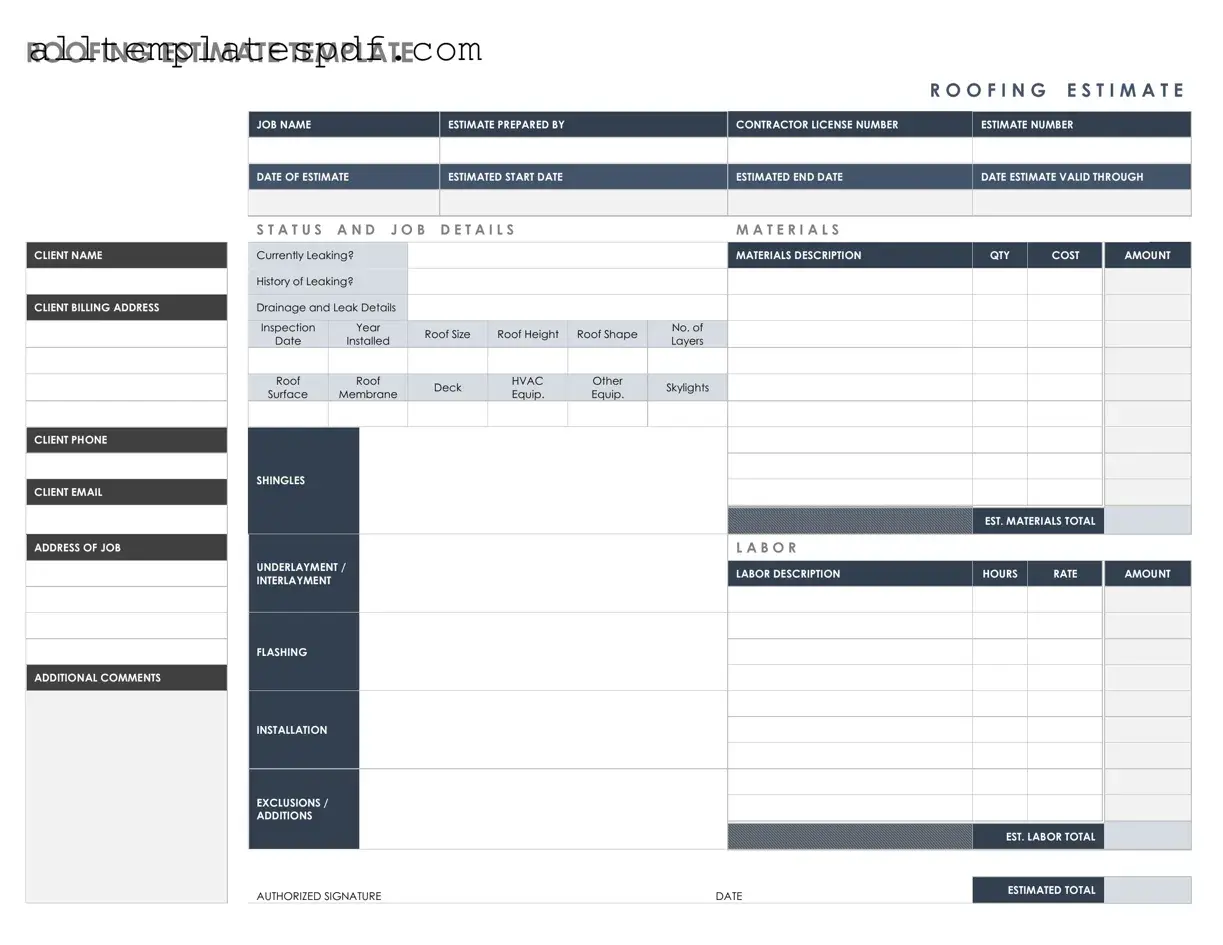When completing a Roofing Estimate form, individuals often make several common mistakes that can lead to delays or inaccuracies in the estimate process. One frequent error is providing incomplete contact information. Without accurate details, roofing contractors may struggle to reach the homeowner for follow-up questions or to deliver the estimate.
Another common mistake involves not specifying the type of roofing material desired. Different materials, such as asphalt shingles, metal, or tile, have varying costs and installation requirements. Omitting this information can result in an estimate that does not align with the homeowner’s preferences or budget.
Homeowners may also overlook the importance of detailing the roof's current condition. Failing to mention existing issues, such as leaks or structural damage, can lead to an inaccurate assessment of the work needed. Providing a comprehensive description helps contractors understand the scope of the project.
Additionally, some individuals neglect to include the square footage of the roof. This measurement is crucial for calculating material costs and labor. Without it, estimates may be significantly off, leading to potential disputes later in the process.
Another mistake is not indicating the urgency of the project. If a homeowner needs the work completed by a specific date, this information should be communicated clearly. Contractors can prioritize their schedules more effectively with this knowledge.
Homeowners sometimes fail to list any special requests or considerations. For instance, if there are specific aesthetic preferences or accessibility concerns, these should be noted on the form. This information helps ensure that the final project meets the homeowner's expectations.
Some individuals may also provide outdated information regarding local building codes or regulations. It is essential to verify that the roofing project complies with current standards. Contractors rely on accurate details to avoid potential legal issues.
Another frequent oversight is not including budget constraints. Homeowners should communicate their financial limits to ensure that the estimates provided align with what they can afford. This transparency can lead to more tailored solutions.
Moreover, not asking questions or seeking clarification on the form can lead to misunderstandings. Homeowners should feel empowered to inquire about anything unclear. This dialogue can help foster a better working relationship with the contractor.
Lastly, submitting the form without a final review can result in errors that could have been easily corrected. Taking a moment to double-check all entries can help prevent miscommunication and ensure that the estimate process runs smoothly.
